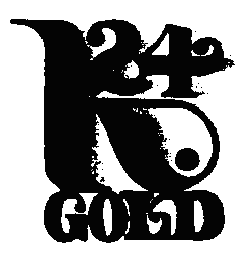Trademark Trial and Appeal Board
Patent and Trademark Office (P.T.O.)
*1 IN RE BENTHIN MANAGEMENT GMBH
Serial No. 74/340,080
September 13, 1995
John E. Michos
Trademark Examining Attorney
Law Office 11
(Thomas G. Howell, Managing Attorney)
Before Sams, Simms and Hanak
Administrative Trademark Judges
Opinion by Hanak
Administrative Trademark Judge
Benthin Management GmbH (applicant) seeks to register BENTHIN and design in the form shown below for "business consultation and market analysis." The intent-to-use application was filed on December 11, 1992.

The Examining Attorney refused registration pursuant to what was then Section 2(e)(3) of the Lanham Trademark Act [15 USC Section 1052(e)(3) ] on the basis that BENTHIN is primarily merely a surname. Section 2(e)(3) was renumbered as Section 2(e)(4) [15 USC 1052(e)(4) ] effective January 1, 1994.
When the refusal was made final, applicant appealed to this Board. Applicant and the Examining Attorney filed briefs. Applicant did not request an oral hearing.
To begin with, we note that "the PTO [has] the burden of establishing a prima facie case that [BENTHIN and design] is 'primarily merely a surname.' " In re Etablissements Darty et Fils, 759 F.2d 15, 225 USPQ 652, 653 (Fed.Cir.1985). Moreover, "the question of whether a [mark] sought to be registered is primarily merely a surname within the meaning of the statute can be resolved only on a case by case basis," taking into account a number of various factual considerations. Darty et Fils, 225 USPQ at 653. See also 1 J. McCarthy, McCarthy on Trademarks and Unfair Competition Section 13.11[3] at pages 13-55 to 13-58 (3d ed. 1992).
In this case, there are five factors which are relevant to a determination of whether BENTHIN and design would be perceived as primarily merely a surname. The first three factors are fairly objective. The final two factors are decidedly subjective.
The first factor to be considered is "the degree of a surname's rareness." In re Garan Inc., 3 USPQ2d 1537, 1540 (TTAB 1987). See also In re Sava Research Corp., 32 USPQ2d 1380, 1381 (TTAB 1994). In this regard, the Examining Attorney made of record a printout from the PHONEDISC U.S.A. data base (1993 ed.) showing that out of over 76 million listings, there are, taking into account duplicative listings, slightly over "100 persons whose last name [[[surname] is Benthin." (Examining Attorney's brief p. 4). On the other hand, applicant made of record photocopies of the pertinent pages from A Dictionary of Surnames, The New Century Cyclopedia of Names and New Dictionary of American Names showing that Benthin is not listed in any of them. [FN1] In addition, applicant made of record photocopies of the pertinent pages from the White Pages for Boston, New York (Manhattan) and Philadelphia showing that there is no listing for the surname Benthin.
*2 Taking into account all of this evidence, we find that Benthin is indeed a rare surname, and that this first factor weighs in favor of a finding that BENTHIN and design would not be perceived as primarily merely a surname. In considering the approximately 100 Benthin listings found in the PHONEDISC U.S.A. data base, we have recognized--as we did in the Sava case--the massive scope of this data base. Indeed, this data base demonstrates the rarity of the surname Benthin by showing that there is but one Benthin for every 750,000 listings. In other words, the surname Benthin is, if not one in a million, one in three quarters of a million.
A second factor to be considered in determining whether BENTHIN and design would be perceived as primarily merely a surname is whether there is "anyone connected with applicant" having the surname Benthin. In re Monotype Corp., 14 USPQ2d 1070, 1071 (TTAB 1989). See also Sava, 32 USPQ2d at 1381. In this regard, it is undisputed that applicant's Managing Director is a Mr. Siegfried Benthin. Moreover, applicant's trade name has as its first word the name Benthin. This second factor weighs in favor of a finding that the service mark BENTHIN and design would be perceived as primarily merely a surname.
A third factor to be considered is whether or not BENTHIN has any "recognized meaning other than that of a surname." In re BDH Two Inc., 26 USPQ2d 1556, 1558 (TTAB 1993). See also Sava, 32 USPQ2d at 1381. The record is devoid of any evidence that Benthin has any meaning other than that of a surname. Thus, this third factor weighs in favor of a finding that BENTHIN and design would be perceived as primarily merely a surname.
This brings us to the fourth factor to be considered, which, along with the fifth factor, is decidedly subjective in nature. This fourth factor is whether Benthin has the "structure and pronunciation" of a surname, or stated somewhat differently, the "look and sound" of a surname. In re Industrie Pirelli, 9 USPQ2d 1564, 1566 (TTAB 1988); Sava, 32 USPQ2d at 1381. As stated in Industrie Pirelli, "certain rare surnames look like surnames, and certain rare surnames do not and that 'Pirelli' falls into the former category, while 'Kodak' falls into the latter." 9 USPQ2d at 1566. We find that this fourth factor is neutral. In our judgment, Benthin does not have the clear look and sound of a surname like Pirelli does, nor does it have the clear look and sound of an arbitrary term like Kodak does.
Were we to stop our analysis here, we would find that the service mark BENTHIN per se would be perceived as primarily merely a surname. While Benthin is indeed a rare surname, by the same token, it has no meanings other than that of a surname, and furthermore, Benthin is the name of applicant's Managing Director.
*3 However, in this case, there is a fifth factor. Applicant does not seek to register BENTHIN per se. Rather, applicant seeks to register BENTHIN and design in a highly stylized form featuring, among other things, an enlarged "T" which overhangs the first "N" and "H."
In this regard, applicant argues that "if anything, the mark would be perceived by consumers as a combination of terms such as BEN-THIN ..." (Applicant's brief p. 5). Regardless of whether one accepts applicant's argument, it is clear that applicant's mark is stylized to the point that the letters also function as a design element. The fact that consumers can, upon inspection of the mark, discern the letters "BENTHIN" does not mean that the mark is not highly stylized or that the letters do not constitute part of the design element of the mark. [FN2]
In determining whether a surname presented in stylized form would be perceived as primarily merely a surname, this Board has, by implication, indicated that if the stylization were distinctive enough, this could cause the mark not to be perceived as primarily merely a surname. In re Pickett Hotel Co., 229 USPQ 760, 763 (TTAB 1986). ("The style of lettering is also insignificant, in that it is clearly not so distinctive as to create any separate commercial impression in the minds of purchasers of appellant's services."). See also Ex parte B.F. Goodrich Co., 89 USPQ 283 (Com.Pat.1951).
Given the rareness of the surname Benthin and the fact that unlike Pirelli, Benthin does not have the clear look and sound of a surname, we believe that when Benthin is presented in the highly stylized form shown in applicant's service mark, it would not be perceived as primarily merely a surname.
Moreover, on the question of whether a mark would be perceived as primarily merely a surname, we are inclined to resolve doubts in favor of the applicant and pass the mark to publication with the knowledge that others who have the same surname and use it or wish to use it for the same or similar goods or services can file a notice of opposition. Cf. In re Gourmet Bakers, Inc., 173 USPQ 565 (TTAB 1972) (descriptive marks); In re In Over Our Heads Inc., 16 USPQ2d 1653, 1654-55 (TTAB 1990) (scandalous and disparaging marks); In re Mavety Media Group Ltd., 33 F.3d 1367, 31 USPQ2d 1923, 1928 (Fed.Cir.1994) (immoral and scandalous marks); In re Hines, 32 USPQ2d 1376, 1377 (TTAB 1994) (disparaging marks).
Decision: The refusal to register is reversed.
J.D. Sams
E.W. Hanak
Administrative Trademark Judges, Trademark Trial and Appeal Board
FN1. The surname dictionaries contain not only "major surnames," but also "many rarer ones" (Introduction to A Dictionary of Surnames), and cover "many diverse languages and dialects" (Preface to New Dictionary of American Names).
FN2. We note that the Trademark Manual of Examining Procedure (2d ed. 1993) states at section 1211.01(b) that "a mark comprised of a word which, standing by itself, would be considered primarily merely a surname, coupled with a distinctive design element is not primarily a surname." The TMEP is not binding on the Board. West Florida Seafood Inc. v. Jet Restaurants Inc., 31 USPQ2d 1660, 1664 n. 8 (Fed.Cir.1994) ("While the TMEP does not have the force and effect of law, it sets forth the guidelines and procedures followed by the examining attorneys at the PTO.") (emphasis added); In re Wine Society of America Inc., 12 USPQ2d 1139, 1141 (TTAB 1989). However, in this instance, we concur with the TMEP proposition that a word which, by itself, is primarily merely a surname is no longer such when coupled with a distinctive design, even if the distinctive design is incorporated into the letters of the word.
DISSENTING OPINION
*4 Simms
Administrative Trademark Judge
For the reasons expressed below, I would affirm the refusal of registration of the mark presented for registration on the basis of this record, or I would remand this case for the purpose of allowing briefs on the question of whether the stylization of applicant's mark is sufficient to avoid the proscription of Section 2(e)(4) of the Trademark Act, 15 USC 1052(e)(4).
The question in these kinds of cases is whether the term sought to be registered is primarily merely a surname within the meaning of the statute. That is to say, what is the primary significance to the purchasing public of the term sought to be registered. See In re Harris-Intertype Corp., 518 F.2d 629, 186 USPQ 238, 239 (CCPA 1975). For example, in In re Etablissements Darty et Fils, 759 F.2d 15, 225 USPQ 652 (Fed.Cir.1985), a case involving remarkably similar facts, the court found that the Office's burden of establishing a prima facie case of primary surname significance had been met by evidence that the term DARTY was the surname of the president of applicant, that this name appeared as a surname in a number of telephone directories, and that this term did not appear in dictionaries as a French or English word. The court stated, at 225 USPQ 653:
Even though a mark may have been adopted because it is the surname of one connected with the business, it may not be primarily merely a surname under the statute because it is also a word having ordinary language meaning. The language meaning is likely to be the primary meaning to the public ... On the other hand, where no common word meaning can be shown, a more difficult question must be answered concerning whether the mark presented for registration would be perceived as a surname or as an arbitrary term ...
... Thus, as a surname, DARTY is not so unusual that such significance would not be recognized by a substantial number of persons. Nor can the interests of those having the surname DARTY be discounted as de minimis. Under these circumstances, the statutory policy against immediate registration on the Principal Register appropriately should be applied.
As the majority has pointed out, the Examining Attorney has made of record 129 references from Phonedisc USA as well as several excerpts from the Nexis database of magazine and newspaper stories of people sharing this surname. On the basis of the factors argued by the attorneys in this case, the majority concedes, page 5, that the Examining Attorney has established a prima facie case of surname significance.
Were we to stop our analysis here, we would find that the service mark BENTHIN per se would be perceived as primarily merely a surname. While Benthin is indeed a rare surname, by the same token, it has no meanings other than that of a surname ...
*5 In this case, the Examining Attorney has not only demonstrated that the name BENTHIN is a surname but also is the name of the applicant's managing director (Siegfried Benthin), who signed this trademark application. See below.
BENTHIN MANAGEMENT GmbH
(Applicant)
By: Siegfried Benthin
Title: Managing Director
Further, the Examining Attorney has pointed out that applicant is doing business under the name Benthin Management GmbH. The Examining Attorney has demonstrated that the term "BENTHIN" is not a word in the English language, nor is it a geographic place name. Because there is no non-surname meaning to this term, what the Examining Attorney has stated in his brief, 8, is not unreasonable.
Applicant's corporate name BENTHIN Management, as well as the name of its Managing Director, Siefried Benthin, support the finding of the examining attorney. It is a common practice to use a surname with the apt descriptive wording which identifies the type of business, e.g., Smith Plumbing or BENTHIN Management. Applicant has apparently taken the surname of Mr. Benthin and combined it with the word Management to form its corporate name.
In connection with business consultation services, it is likely that purchasers of applicant's services will soon become aware that these services are offered by an individual with the surname Benthin. In other words, this name will likely have surname significance to purchasers, if not to potential purchasers.
Even though Benthin is a rare surname, we have repeatedly held that rare surnames, in appropriate cases, may be no more registrable than more common surnames. See, for example, In re Rebo High Definition Studio Inc., 15 USPQ2d 1314 (TTAB 1990) and Societe Civile Des Domaines Dourthe Freres v. SA Consortium Vinicole De Bordeaux et De La Gironde, 6 USPQ2d 1205 (TTAB 1988). That is to say, even rare surnames are unregistrable on the Principal Register if the term has primary surname significance. In In re Luis Caballero, S.A., 223 USPQ 355 (TTAB 1984), the Board affirmed a refusal where the evidence consisted, among other things, of just three listings of individuals with the surname BURDON. Here, the fact that the name Benthin is not listed in a reference work of "[a]ll of the common names" used in this country (New Dictionary of American Names) or a dictionary of entries of "most major surnames of European origin, as well as for many rarer ones" whose "primary focus" is on surnames of the British Isles (A Dictionary of Surnames) [FN1] is beside the point. It is undisputed that this surname is a relatively rare one in this country. However, a significant factor in the cases cited above and other cases was that the term proposed for registration was also the surname of someone connected with applicant's business as well as the fact that the mark sought to be registered had only surname significance. See also In re Winegard Company, 162 USPQ 261 (TTAB 1969).
*6 Applicant has also argued that the asserted mark has no surname-like characteristics and the majority has found that this factor (the "look and sound") is a "neutral" one. I disagree. In my view, the surname Benthin is similar to other, perhaps more common surnames, such as Bentham. (For example, Jeremy Bentham was a noted English philosopher.) Some may view applicant's mark as similar to other, more frequently encountered surnames, such as Bentsen.
When confronted by these facts, the majority nevertheless determines that the asserted mark is registrable. The majority has therefore implicitly found that the primary significance of the mark sought to be registered is not that of a surname. I cannot agree with the majority when it indulges in speculation that the asserted mark, which is an admitted surname, would no longer be perceived as a surname when it is displayed in the stylized lettering presented for registration. Nowhere has the majority explained how the stylization here would make potential purchasers not view the asserted mark as a surname. Assuming that the primary significance of BENTHIN per se would be that of a surname, the display of the surname in this manner, in my view, does not somehow
magically change its primary surname significance. In other words, I do not see how the display of this surname creates a separate commercial impression that detracts from the surname significance of the mark. In my opinion, this term would still be perceived as a surname, but simply one in stylized letters. I might reach a different result if, for example, the "THIN" portion of applicant's surname were displayed in narrow lettering so as to play on the meaning of this part of applicant's name. Potential purchasers might, in this case, view the mark as having other than surname significance (although this proposition becomes less tenable when the mark is considered in connection with applicant's business consultation services, rather than some other product or service).
Furthermore, the majority reaches its conclusion sua sponte, that is, without any argument on this issue from applicant's attorney. [FN2] It is my opinion that the speculative judgment about the perception of this admitted surname should not be used to alter the result of this case, especially since it was not argued by either attorney. Concluding that the surname does not have primary surname significance solely on the basis of stylization of a surname is too subjective a determination on which to base reversal of this refusal.
Moreover, this conclusion was reached in the face of other cases involving composite surname marks which were held to have a primary surname significance. For example, in In re Pickett Hotel Company, supra, the mark shown below
was held to be primarily merely a surname, the Board commenting that the stylization did not detract from its surname significance. See also In re Woolley's Petite Suites, 18 USPQ2d 1810 (TTAB 1991), in which the mark WOOLLEY'S PETITE SUITES was held to be primarily merely a surname. In none of these cases was the additional matter considered sufficient to detract from the primary surname significance of the mark sought to be registered. In my view, this is exactly the case before us.
*7 One may legitimately question whether, by this decision permitting registration when a surname is presented in some style of lettering, we are doing justice to the intent of Congress, which chose to ban the registration of surnames in the absence of a secondary meaning. Indeed, it is unrealistic in today's marketing environment to expect a marketer to use his or her surname in an unadorned fashion. Aside from the enlarged "T" in the middle of applicant's mark, there is little more stylization than the varying sizes of the letters that form this surname to fit the surrounding oval.
Finally, closely analogous cases in the field of merely descriptive marks may be pointed to as illustrations of the obvious subjectivity of this judgment. For example, in In re Grande Cheese Co., 2 USPQ2d 1447 (TTAB 1986), the asserted marks MOZZARELLA and ITALIAN CHEESES shown in the following forms
were refused registration on the Principal Register because the stylized displays were not considered inherently distinctive of applicant's goods. The mark "ThruService" was determined to be not inherently distinctive for transportation services in United States Lines, Inc. v. American President Lines, Ltd., 212 USPQ 1224 (TTAB 1982).
Likewise, in In re Project Five, Inc., 209 USPQ 423 (TTAB 1980), the Board held that the mark shown below, sought to
be registered on the Principal Register for gold and silver bullion jewelry, was not displayed in a distinctive design which created a commercial impression separate and apart from the disclaimed components. In In re Behre Industries, Inc., 203 USPQ 1030 (TTAB 1979), the mark "HOT WAX" in the form shown below, for automobile polish, was held not inherently distinctive.

When one compares the stylization of these asserted marks with the mark here sought to be registered, it is difficult to reconcile the result the majority has reached in this case. In other words, if the stylized lettering of these cases was not sufficient to create a separate commercial impression, one may legitimately ask, "How does the stylization here create one?"
For these reasons, I would either affirm this refusal on the record presented or remand this application for appropriate briefing on the issue of the effect of the stylization on the surname significance of this mark.
FN1. Mr. Benthin is a German citizen but it is not clear from this record what the origin of this surname is.
FN2. It is clear that applicant's argument about the perception of the term Benthin, quoted on page 5 of the majority opinion, relates to the unstylized term and not the specific display sought to be registered, which I view as not significant enough to change the outcome of this case ("not so distinctive as to create any separate commercial impression in the minds of purchasers", in the language of In re Pickett Hotel Co., 229 USPQ 760, 763 (TTAB 1986)).






